Top 10 best hardcore sports cars 2018
1. Porsche 911 GT3
The supreme hardcore focus, track-day hardiness, handling brilliance, driver involvement and performance value of the Porsche 911 GT3make it a car that absolutely demands the highest recognition we can give. It has become the default answer to any number of questions a newly inducted petrolhead might ask about which car they should buy to maximise return on investment for speed, excitement and driver reward. The only fly in the ointment is that, these days, everyone knows it — and so GT3s have become highly sought after.
OUR VERDICT
Find an Autocar car review
Driven this week
 12 OCTOBER 2018FIRST DRIVEThe first Leaf was an EV pioneer. Can the new one make as big an impact? We...
12 OCTOBER 2018FIRST DRIVEThe first Leaf was an EV pioneer. Can the new one make as big an impact? We... 12 OCTOBER 2018FIRST DRIVEWe try Vauxhall's family SUV with the PSA Group's latest four-...
12 OCTOBER 2018FIRST DRIVEWe try Vauxhall's family SUV with the PSA Group's latest four-... 12 OCTOBER 2018CAR REVIEWJeep has promoted its old crossover to compact SUV status. Will the Compass...
12 OCTOBER 2018CAR REVIEWJeep has promoted its old crossover to compact SUV status. Will the Compass...
This isn’t a car that advertises its brilliance particularly loudly on paper. The car’s 493bhp 4.0-litre flat-six makes it look a bit outgunned in this company, and even in Porsche’s own model rangethere are several 911s with greater claimed power and outright accelerative performance. But no rival has the GT3’s blend of pace, grip, balance and usefully positioned weight; none has the all-round dynamic precision and outstanding controllability needed at once to set blistering laptimes and set your imagination racing on track. And few seem as well suited to road use once the pitlane has closed.
Through three generations and as many mid-cycle revisions, the GT3 has got better and better since the very first one appeared in 1999. Counting some very closely related GT3 derivative offshoots, it has won Autocar’s annual Britain’s Best Driver’s Car contest four times. Porsche 911s of various types have won it seven times. For the record, no other sports car in three decades of competition has won it more than twice.

2. Ferrari 458 Speciale
When car enthusiasm is outlawed, the mid-engined supercar is consigned to history and its obituary is written, the track-tailored Ferrari 458 Speciale might just be recognised as the greatest and most exciting example ever built.
It remains in our hardcore sports cars top 10 because, while the 458 Italia on which it was basedhas long since been replaced by Maranello’s 488 GTB, the Speciale’s direct replacement has yet to appear. And even when that successor does materialise, there are those at Autocar HQ who simply can’t fathom how it’ll be a better driver’s car than this.
The car was introduced at the 2013 Frankfurt motor show, having had its 4.5-litre V8 massaged to the tune of 597bhp at a stratospheric 9000rpm, its twin-clutch gearbox sharpened up on shift time, its kerbweight slimmed down by 90kg in all, its suspension retuned, its brakes uprated, its steering quickened and its aerodynamics honed. All onwards and upwards from the baseline 458 Italia, which wasn’t a car to be sniffed at. And what results those revisions yielded.
The Speciale’s pin-sharp handling was awe-inspiring, and its handling poise and adjustability so spell-binding as to be capable of keeping you under its power, lap by lap, almost interminably. And it could be that way whether you had the car’s electronic aids on or off. The car’s controls felt more faithful, too, than a regular 458’s, while the car’s screaming engine was a fitting farewell to the Ferrari atmospheric V8.
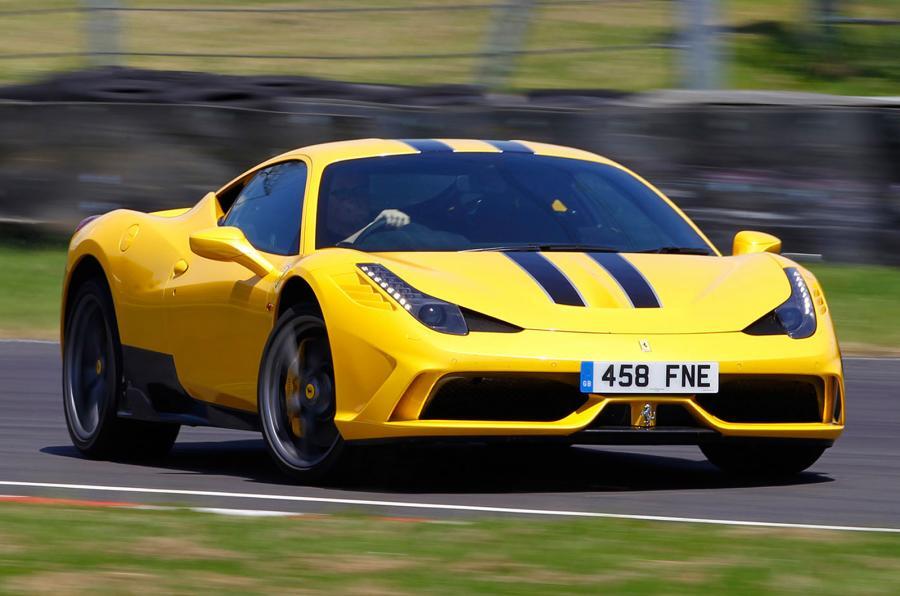
Article continues below advertisement
3. Porsche 911 GT2 RS
This is where the world’s best-loved sports car gets a bit silly. There has never been a faster or more powerful 911 than the 690bhp, 211mph GT2 RS. This uber-911 seeks to combine the involving track focus of the GT3 RS with a level of torque and sheer brute force performance that even a 911 Turbo S couldn’t equal, with the latter channelled through one driven axle rather than two. It’s quite a mission statement — and, if only by Porsche’s own high standards, it’s not entirely successfully delivered upon.
But such a tiny detail needn’t necessarily come between any GT2 RS owner and the appreciation of what remains a staggeringly compelling driver’s car, because the GT2 RS is remarkably good at keeping its ridiculousness largely in check most of the time, unleashing it only when you want it to. The car uses 21in rear wheels and 325-section tyres to transmit its venom to the Tarmac. It has carbon-ceramic brakes as standard and a suspension set-up even more specialised than that of a GT3 RS.
And yet, unlike almost any other 911 GT2 there has ever been, it knows how to behave itself when the occasion calls for it. At other times? It’s ballistic; not without turbo lag (how could it be?) but still remarkably responsive and linear, and as fast as a hypercar in full cry. It’s also approachable and obedient on a track, for the most part. It doesn’t feel like it’s hardwired into your synapses like a GT3 and doesn’t involve to quite the same extent. Even so, there’s nothing else quite like it.
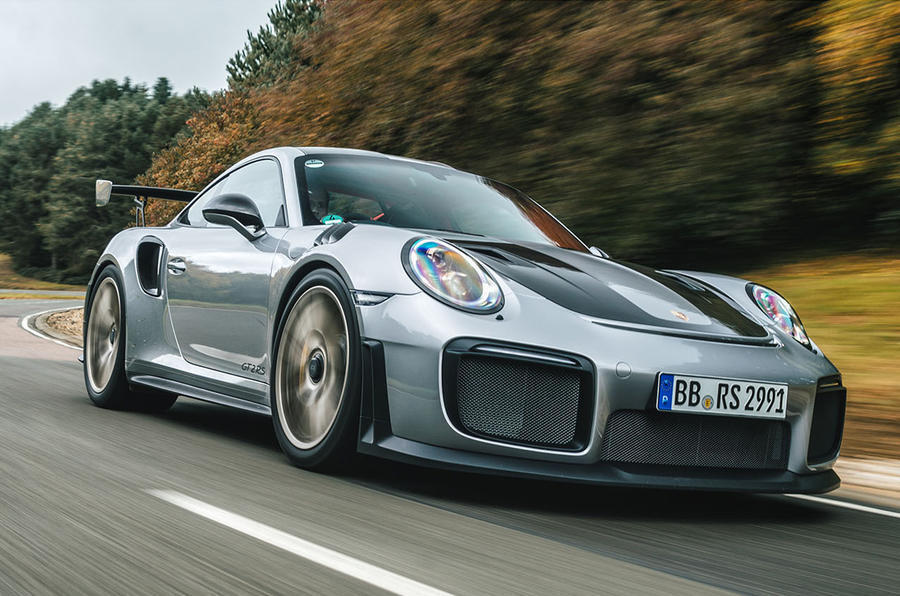
4. McLaren 675 LT
Ranking here because, just like the Ferrari 458 Speciale, it has yet to be directly replaced, the McLaren 675 ‘Longtail’ was a coming of age for its British originator in more ways than one. It was the first of McLaren’s supercars to begin to show us evidence of a key realisation from Woking: that keen drivers ultimately care at least as much about how they’re going fast as how fast they can ultimately go.
Having ticked the second box pretty emphatically with the P1 hypercar, McLaren catered more to the first with the 675 LT — and quite successfully so. The firm found an extra 25bhp for the car’s 3.8-litre turbo V8 engine in addition to 650S trim, but added bodywork that created 40% more downforce, saved 100kg of kerb weight, stiffened the car’s suspension and quickened its steering rack.
But, above all else, it retuned the 650S’s torque vectoring system and electronic aids to allow its handling to come alive more readily on circuit, and rebalanced its grip levels to give it the handling agility, poise and adjustability of a really immersive mid-engined driver’s car. It’s a monster of track machine, too: thoroughly challenging and rampantly fast. But, perhaps most importantly of all, this was the first of McLaren’s road car crop that could also be really good fun.
Article continues below advertisement
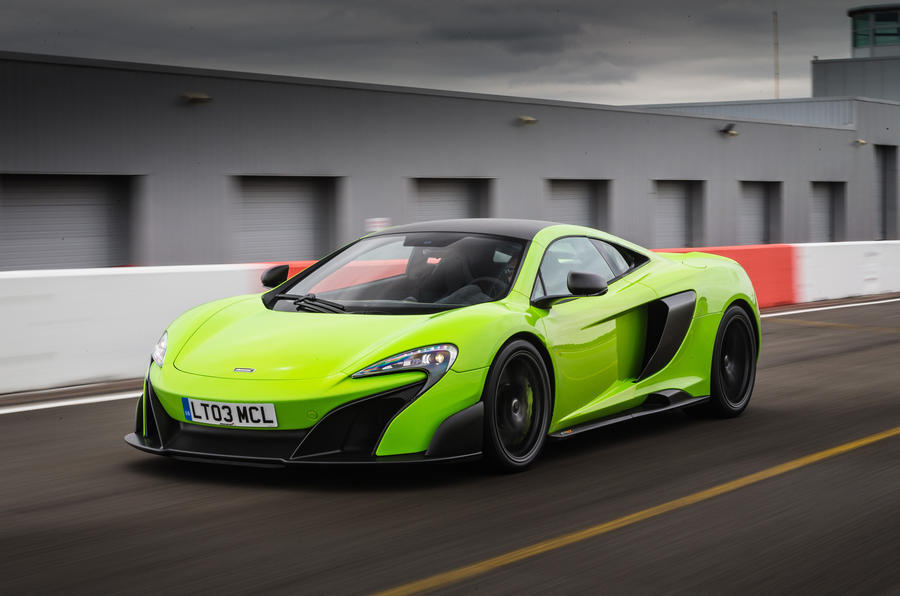
5. Lamborghini Huracán Performante
Having until quite recently been the fastest production car in history to lap the Nürburgring Nordschleife circuit, the Lamborghini Huracán Performante is also the fastest car we’ve ever timed around our benchmark dry handling circuit around which every performance car that’s subject to a full Autocar road test is driven.
That makes the 630bhp, extra-lightweight, four-wheel drive Lambo quicker, corner by corner, than a McLaren P1, a Porsche 918 Spyder and a Bugatti Veyron Supersport; that's proof of how much grip, incisiveness, poise and precision Sant’Agata has engineering into a Huracán chassis, which wasn’t class-leading in any of those respects in standard form. Very little will prepare you for the baleful, red-blooded howl of this car’s naturally aspirated V10 engine as it rips past 8000rpm, or the savagery of every upshift of its twin-clutch gearbox.
In an era of turbocharged opponents, the Huracán’s rapier-sharp engine really is to be embraced and savoured. But, in this Huracán, the handling balance and confidence you’ll unearth once the car’s incredible Pirelli Trofeo R tyres are warmed up is of almost equal brilliance as the powertrain.
The Huracán has almost unrivalled supercar presence and sense of occasion, not to mention all that bleeding soul. As an object of desire, its appeal is multifaceted; you won’t find better-looking carbonfibre anywhere else in the world. As a driver’s car, it only lacks that last degree of throttle-on poise and interactivity of the best of its rivals.
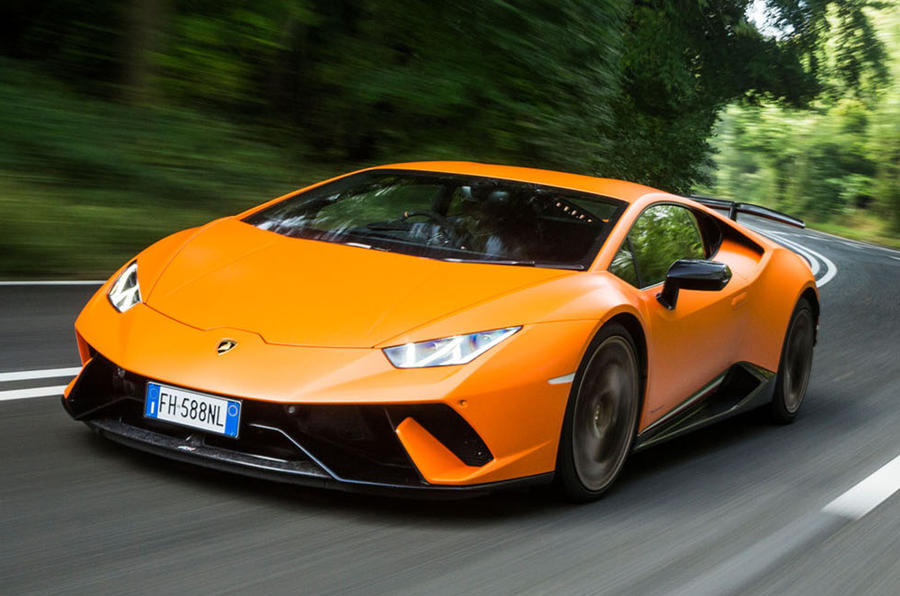
6. Lotus Exige Cup 430
This is nothing less than the quickest street-legal production car that Lotus has ever made. Significantly modified from Hethel’s Sport 380 specification, the Cup 430 has a supercharged V6 engine good for 430bhp and shared with the Evora GT430; but it weighs just 1056kg without fluids, making it good for a claimed 0-62mph sprint of 3.3sec. Top speed is 180mph, in a car that also makes hundreds of kilograms of downforce, so it's capable of lapping Lotus’s home test track more than a second quicker than the car it replaces.
Article continues below advertisement
On road or track, the Cup 430 feels ferociously fast and intensely engaging to a level that no modern Lotus has previously reached. It’s a car without Hethel’s usual preference for a supple, breathing road ride, but it has three-way adjustable dampers and adjustable ant-roll bars so can be set up to your preference. In standard setting, it’s certainly firm enough to test your enthusiasm for it; and its cabin is as tight and frippery-free as Exiges have ever been.
On the track, the car’s handling is little short of magnificent. Such a light car doesn’t punish its mechanicals too hard and can be driven hard lap after lap without showing a hint of wilting under pressure. It’s a driving experience that rewards the investment of effort and commitment with vivid excitement, huge speed and handling that’s supremely agile and balanced — albeit quite scary in wet conditions.

7. BMW M4 GTS
Every now and again, the management of BMW’s Motorsport performance division is given licence to go a bit nuts and produce an extra-special limited-series production machine with top-level performance specialism and purpose.
That licence has given us the BMW ‘E30’ M3 Sport Evo, the ‘E46’ M3 CSL and the ‘E90’ M3 GTS over the years. And now it’s given rise to this, the M4 GTS: a very trick version of BMW’s high-performance 4 Series Coupé with a 493bhp water-injected six-cylinder turbocharged engine, carbon-ceramic brakes, fully adjustable coilover suspension, carbonfibre bodywork and a cool £121k pricetag.
Classic front-engined, rear-wheel drive handling balance is the GTS’s dynamic calling card on track. If you catch those Michelin Cup tyres before there’s too much heat in them, the car’s a real hooligan of a drift machine that’ll benignly take angles of attitude you wouldn’t have the confidence to adopt in most cars in this class.
The question marks? Perhaps that six-cylinder engine feels a little bit unworthy of the pricetag, the gearbox isn’t brilliant on the road when you’re not driving the doors off the car and the ride and handling are only as good as the effort you’re prepared to invest in setting it up (the act of which requires a hydraulic lift and a large set of spanners).
On different occasions and tests, the GTS has handled sublimely well at times, but also with alarming skittishness and hyper-responsiveness on the road at other times. It’s a car whose handling only gives back what you’re prepared to put in by way of preparation.
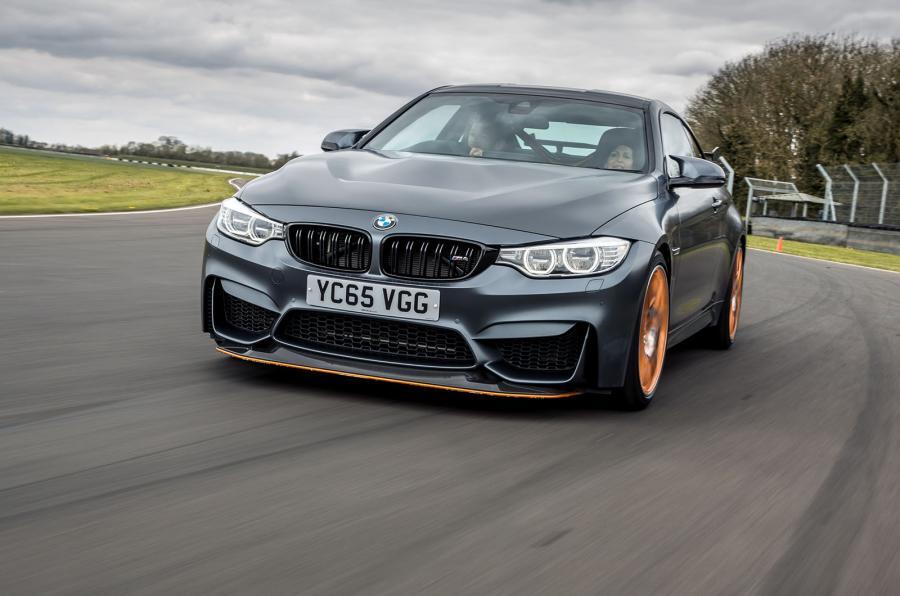
Article continues below advertisement
8. Nissan GT-R Nismo
The fabled Nissan ‘Skyline’ GT-R, in its ‘R35’ model generation, may have been around for more than a decade now but, in top-of-the-range GT-R Nismo form, it’s a very different animal from the 478bhp standard model that Nissan introduced in 2007. Having massed the car’s twin turbo V6 up to 592bhp for the original GT-R Nismo, Nissan further stiffened the car’s bodyshell and monocoque for the 2017 version, retuning its suspension in details only but more widely updating its exterior styling and interior specification.
The car’s handling is better balanced — both than it was previously and than a regular GT-R, with weighty, honest, responsive steering allowing you to point it more readily in to corners and then feel the four-wheel drive system shuffling torque around the rear axle to keep it turned in. Outright grip and body control are both very good, although perhaps not quite on the level of some of the cars it’s up against here on account of the 1.7-tonne timber it’s carrying.
The GT-R’s appeal at this level isn’t quite as simple as it is generally. This car’s £150k asking price makes it a straight rival for the supercars whose pace it matches, rather playing the giant-killer we’ve long known the GT-R to be. Still, it’s a hugely tactile, likeable, analogue-feeling driver’s car of remarkable pace.
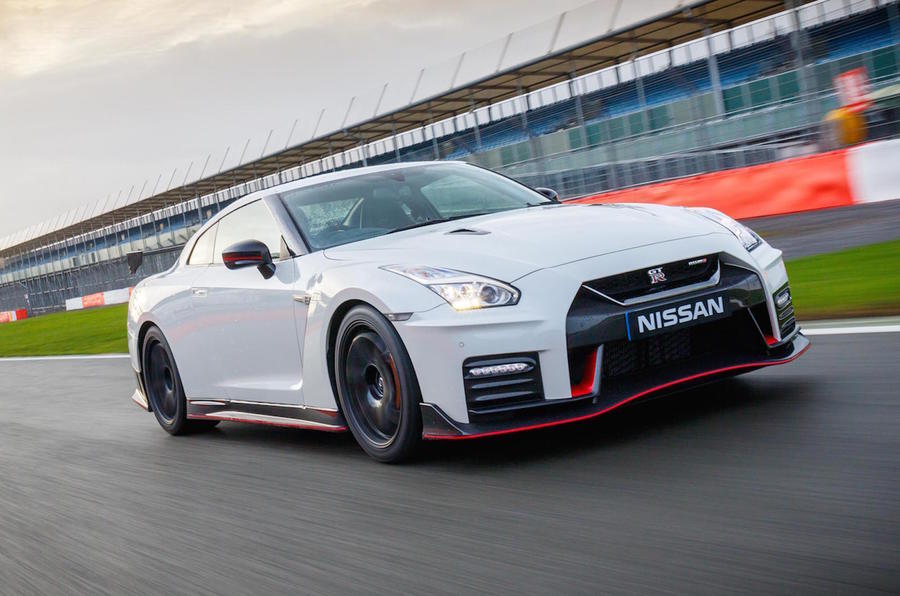
9. Mercedes-AMG GT R
Carrying more motorsport technology than any production machine in Mercedes-AMG’s history, the GT R was Affalterbach’s big swipe at the golden boy of its near Stuttgart rival: the Porsche 911 GT3. That it exists at all tells you much about AMG’s determination, one day soon, to emerge from the shadows of its world-famous neighbour as a maker of sports cars of equal stature and acclaim.
That the GT R features towards the bottom of this chart, however, and the GT3 at the very top, tells you that there’s still some work to be done before that can happen. But don’t think for a moment that it means the GT R gets everything wrong that the GT3 gets so spectacularly right; they are, in fact, very different cars with very distinct characters. The GT R’s 577bhp V8 engine, for example, has bombastic vocal swagger and supercar thrust that the GT3’s flat-six can’t match.
Like the GT3’s, the GT R’s chassis features fully adjustable, rigid-mounted suspension and four-wheel steering. But it doesn’t turn those systems to such spellbinding effect as the Porsche manages, lacking the same confidence-inspiring progressiveness in its limit handling and feedback through its chassis and steering. The car’s 10-position traction control system is very impressive on track and is there to be leaned on as little or as much as you choose. But turn it off and the GT R’s chassis can be cruel, particularly in wet conditions.
Article continues below advertisement
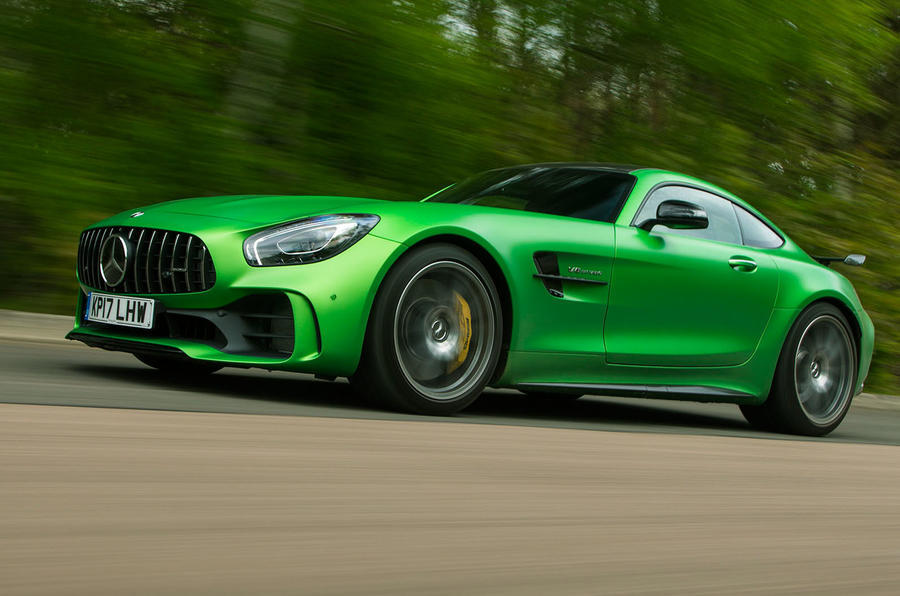
10. Radical RXC GT
The idea of a modern Le Mans racing prototype for the road may be enticing, but the roster of car manufacturers actually offering one isn’t long. You can argue, in fact, that there’s only one entry: Radical Sportscars of Peterborough. The RXC GT really is what Radical says it is: a spaceframe racing car with a 650bhp turbo V6 and numberplates.
It can be driven from home to track, and then stands ready to develop nearly a full tonne of downforce and more than 2.0g of lateral grip when you get there. It’s an entirely nutty idea, making this one of the most hardcore road-legal cars the world has ever seen — and, it has to be said, not the easiest or most rewarding to drive on the road. Getting in and out, and then wrestling with the car’s heavy steering, pneumatically actuated sequential gearbox and laughable turning circle, is sufficiently tricky that you wouldn’t drive this car anywhere other than a circuit by choice.
And on track? It’s stupendously rapid in dry conditions and challenging of both your bravery and skill; deliciously extreme like almost nothing else, then. It’s a car whose existence we celebrate — but also a fine advert for a torquey SUV and a trailer.
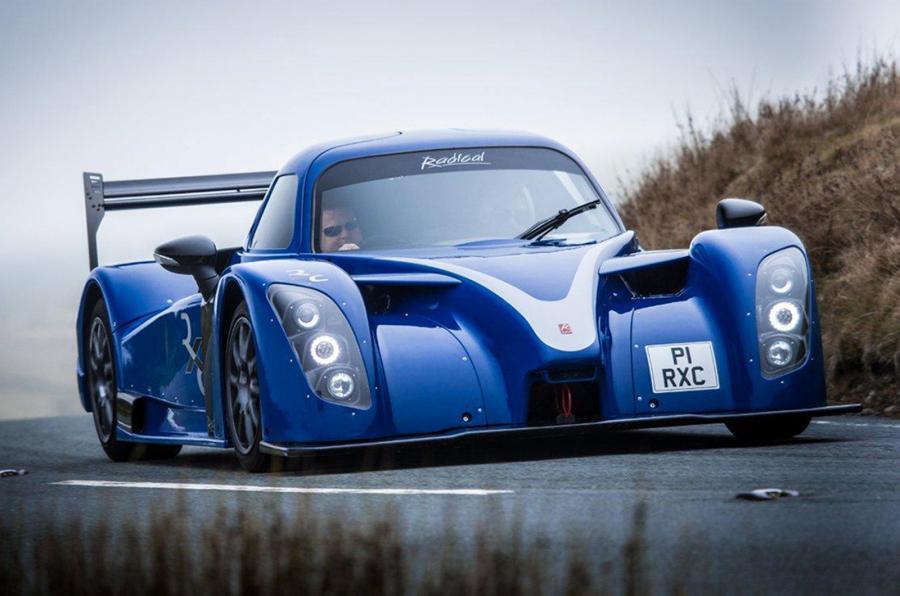
- Get link
- X
- Other Apps

Comments
Post a Comment